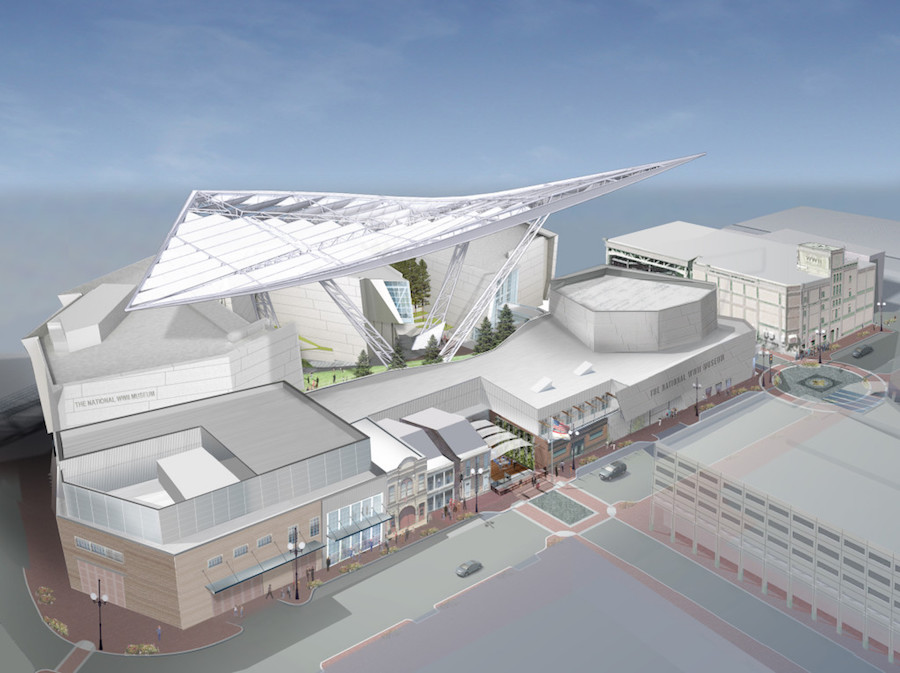Construction has started on a $10 million project to erect a large canopy at the National World War II Museum in New Orleans.
The 448-ft-long, 126-ft-wide steel and fiberglass structure will sit 150 ft above the ground and provide shade to some of the museum's main halls. A high-tech lighting system will also be installed to light up the canopy at night and broadcast messaging to visitors down below.
Bart Voorsanger of Voorsanger Architects in New York, designed the canopy and says it's structurally and architecturally unique, symbolizing peace through strength and power. When completed, the canopy will rise above the buildings of the warehouse district and become an iconic part of New Orleans' skyline. "We needed a dynamic architectural element that really consolidated the campus and was on a national scale that would really speak to this being a national museum," says Voorsanger.
Bob Farnsworth, the museum's senior vice president for capital programs, says they drove the pilings for the canopy years ago while working on another museum additions. The structure will be supported by four legs that sit between two of the pavilions. Farnsworth says the 100-ft-long, 24-in steel piles are partially filled with concrete and support "humongous" pile caps, one of which is 115 ft long, 18 ft wide and 6 ft deep.
The steel for the canopy is being fabricated in Mexico, railed to New Orleans, and will then be trucked to the site in order of the construction sequence. Farnsworth says erection of the main structure will start in January with the sequence taking approximately ten weeks. Massive cranes will be used to maneuver and support the structure in tight positions.
"It's a very unstable structure as you reach a certain stage of erection so it has to be temporarily support in several locations. It's a highly technical process to develop the erection sequence," says Farnsworth.
Any time they're lifting steel over a museum pavilion, the entire pavilion will be closed, he adds. After the main structure is secured, contractors will have roughly six weeks of fabric installation followed by installation of the lighting equipment.
Farnsworth says the canopy is scheduled for completion in 2017.



Post a comment to this article
Report Abusive Comment